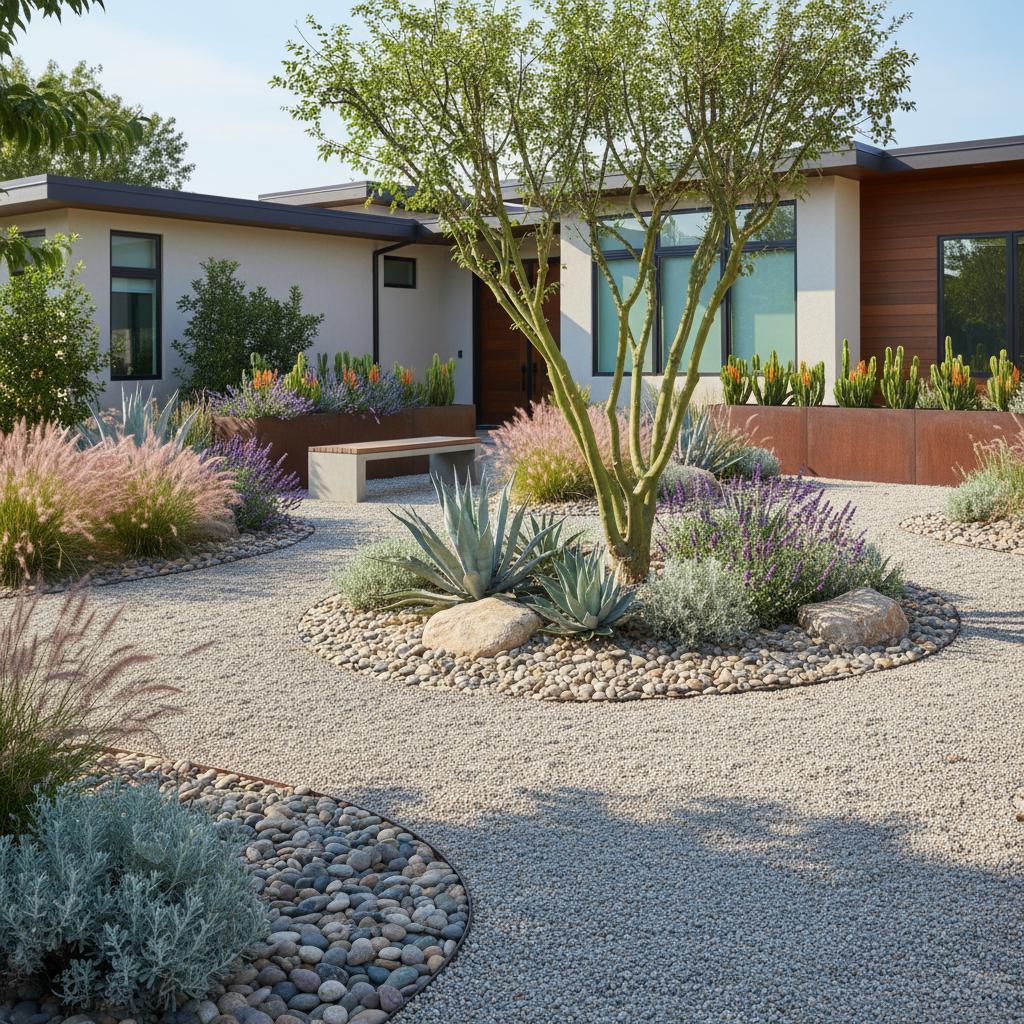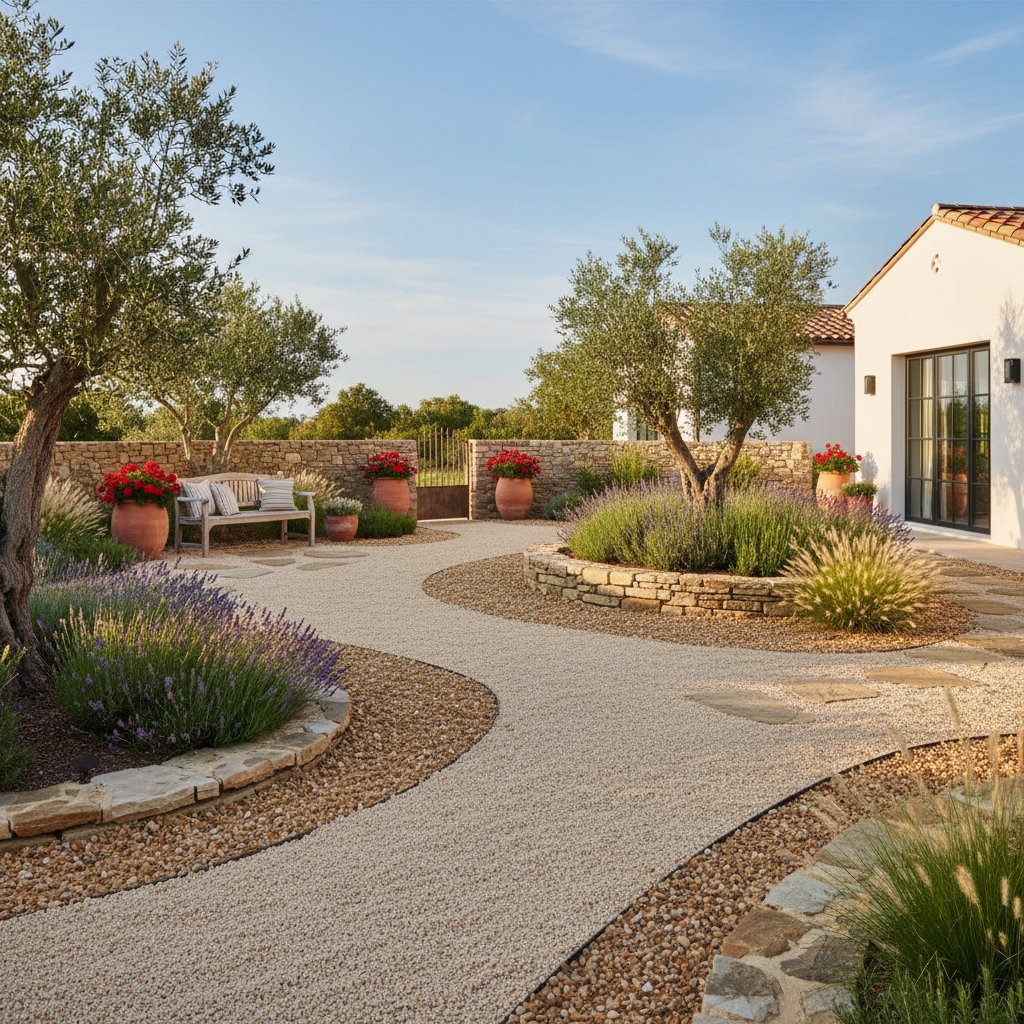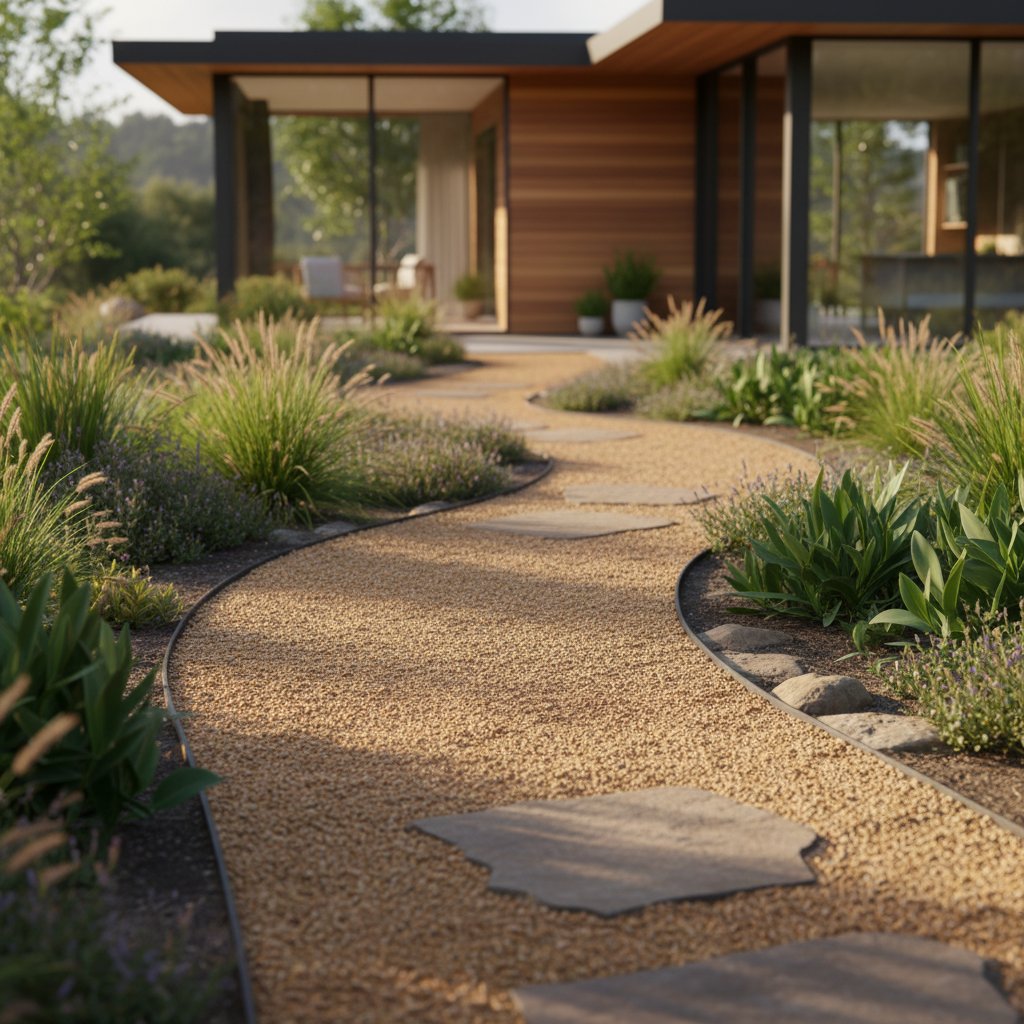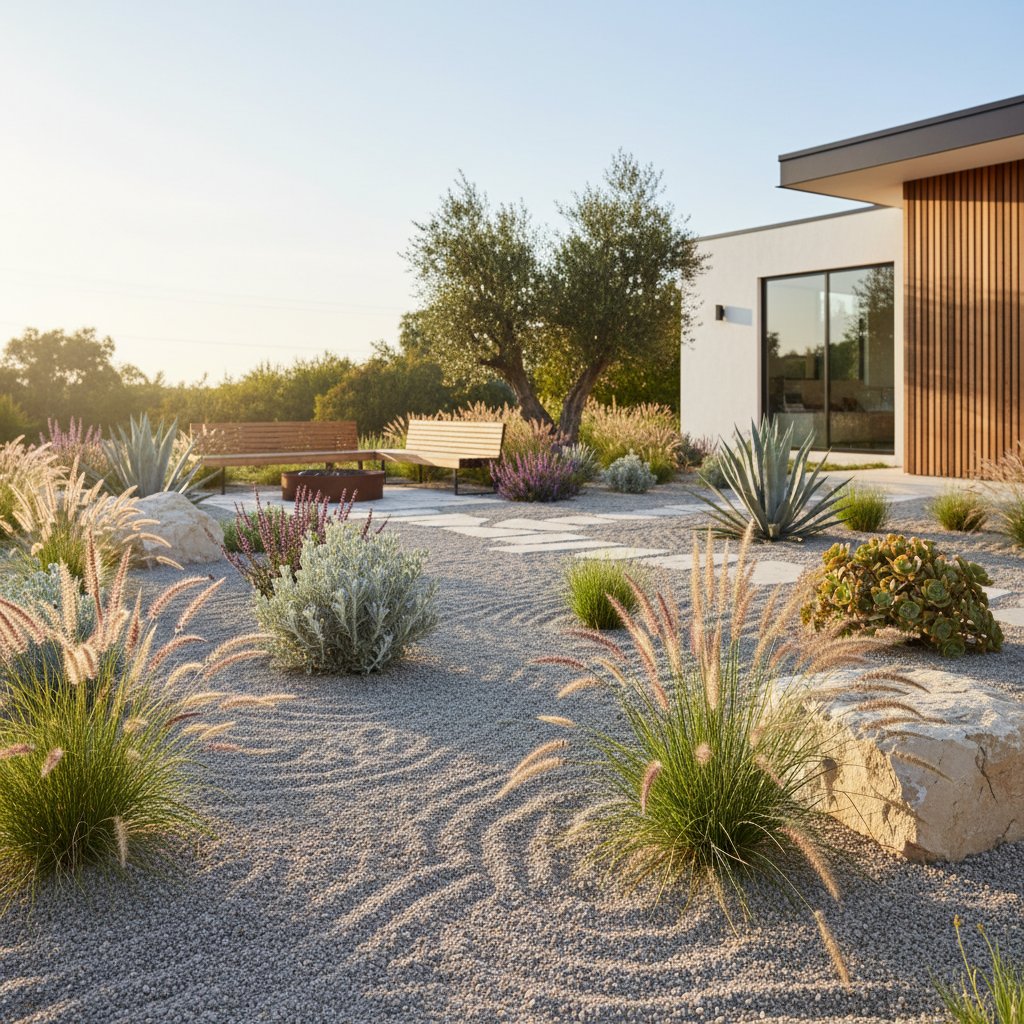Gravel Gardens: Effortless Beauty for Busy Homeowners
A beautiful garden provides joy, yet traditional designs demand significant time and effort. Gravel gardens offer an elegant alternative, blending natural textures with minimal upkeep for enduring appeal. These landscapes suit compact urban plots or expansive suburban yards, delivering a refined look without intensive labor.
Defining a Gravel Garden
A gravel garden features a base of decorative stones and gravels paired with drought-resistant vegetation, supplanting turf and thirsty flora. The design promotes rapid drainage, suppresses weeds, and maintains visual interest across seasons. Emphasis falls on form, texture, and hue via rocks, compact shrubs, and robust perennials rather than dense foliage.
Such gardens draw from arid Mediterranean or desert motifs, where resources remain scarce and flora adapts to parched conditions. In cooler regions, they succeed equally with appropriate selections of stone and greenery. This versatility ensures broad applicability for diverse climates.
Key Reasons Homeowners Opt for Gravel Gardens
Gravel gardens attract those with demanding schedules due to their practicality and adaptability. Initial costs prove reasonable, and ongoing demands stay light. The following benefits highlight their value.
Minimal Upkeep: Established gardens require infrequent attention. Weed intrusion stays low, and routine watering or feeding becomes unnecessary.
Superior Water Conservation: The gravel layer reduces evaporation and stabilizes soil hydration. Plants thus demand substantially less irrigation, aligning with sustainable practices.
Extended Durability: Stones resist decay and discoloration, enduring exposure to elements. The installation retains vibrancy for over a decade with occasional adjustments.
Versatile Aesthetics: Available in hues from soft grays to warm earth tones and sizes from fine pebbles to bold cobbles, gravel enables tailored pathways, edgings, or focal zones that complement architectural styles.
Budget-Friendly Over Time: Upfront expenses cover materials and labor, yet savings accrue from eliminated mowing, reduced utility bills, and fewer plant replacements.
Planning Your Gravel Garden
Develop a detailed blueprint prior to acquiring supplies. Consider the intended aesthetic and functional role of the area. For instance, a modest patio may incorporate 50 square feet of gravel with five to ten plants, whereas a full backyard might divide into zones featuring varied stone gradations.
-
Identify Optimal Site: Select areas with natural slope for drainage. Steer clear of depressions that pool rainwater, as these foster erosion or plant stress.
-
Outline the Design: Employ string or a flexible hose to delineate borders and routes on the ground. Draft a basic diagram to position plants and features for balanced composition.
-
Choose Gravel Varieties: Options include smooth pea gravel for even surfaces, angular crushed granite for stability, or rounded river rock for organic flow. Match size to use: finer for walkways, coarser for mulch-like coverage.
-
Select Resilient Plants: Opt for species such as lavender for fragrance, Russian sage for height, feather reed grass for movement, and stonecrop sedum for ground-level color. These thrive in lean soils with minimal intervention.
-
Incorporate Edging: Use galvanized steel for clean lines, pressure-treated lumber for rustic charm, or flagstone for seamless integration. This containment preserves the gravel's integrity against adjacent turf or hardscapes.
Step-by-Step Installation Guide
Assemble a gravel garden over a single weekend using standard tools like a shovel, rake, and wheelbarrow. Precision in each phase ensures longevity and performance.
-
Excavate the Site: Eliminate sod, weeds, and debris to a depth of four inches. Apply a geotextile fabric as a barrier to block future weed emergence while permitting percolation.
-
Amend the Base: Till the subsoil and blend in coarse sand or decomposed granite to enhance permeability. This foundation prevents settling and supports plant vitality.
-
Install Boundaries: Secure edging materials along the perimeter, anchoring them with stakes for stability. Curves and angles add dynamic interest to straight layouts.
-
Position the Fabric: Roll out landscape cloth over the prepared soil, overlapping seams by six inches and securing with pins. Trim excess to fit the edged area neatly.
-
Distribute Gravel: Spread the selected stone to a uniform two- to three-inch layer, calculating about 100 pounds per square yard for coverage. Level with a rake for a professional finish.
-
Integrate Plants: Slice slits in the fabric corresponding to planting holes, then position root balls at soil grade. Thorough initial watering establishes anchorage.
-
Refine Details: Redistribute gravel to fill gaps around plants and add decorative elements like boulders or sculptures. Step back to assess symmetry and make final tweaks.
Budgeting and Routine Upkeep
Expenses vary by scale and selections: basic pea gravel costs around $1 to $2 per square foot, while premium river rock reaches $4 to $6. Factor in $0.50 per square foot for fabric, $20 to $50 per linear foot for edging, and $10 to $30 per plant. Total outlay for a 200-square-foot garden typically falls between $300 and $800, far below alternatives like installed sod at $1.50 per square foot plus ongoing care.
Upkeep involves occasional tasks to sustain appearance. Hand-remove emerging weeds promptly to avoid establishment. Refresh gravel depth annually in high-traffic zones, and perform light pruning on perennials in spring to encourage bushiness. Seasonal investment rarely exceeds four hours per year.
Enhancing Design for Timeless Appeal
Effective gravel gardens harmonize elements for depth and invitation. Layer gravels of varying granularity: pair 1/4-inch fines with 1-inch chunks to simulate natural strata.
Incorporate hybrid surfaces, such as bluestone pavers inset into gravel for stepping stones that guide movement. Select flora with diverse silhouettes, blending upright yarrow with trailing ice plant for layered vistas.
Introduce anchors like a sculpted urn or dwarf evergreen to draw the eye and provide scale. For evening ambiance, embed low-voltage LEDs along edges to accentuate stone facets and foliage shadows without overpowering the scene.
Sustaining Your Gravel Garden Year-Round
Regular assessments keep the garden thriving with ease. Clear fallen branches or leaves quarterly to maintain openness. Address thinning areas by relocating excess gravel from denser sections.
Monitor plant health: divide vigorous spreaders like catmint every two years to prevent overcrowding. In winter, a light mulch topper protects roots in colder zones, while summer inspections ensure no heat stress affects the ensemble.
Harvest the Rewards of Your Gravel Garden
Your completed gravel garden delivers persistent elegance and efficiency. It liberates weekends from chores, curtails resource consumption, and evolves subtly with the seasons. Embrace this resilient haven as a testament to thoughtful, low-effort landscaping that enriches daily life.



